Top 20 Famous Places to Visit in Patna
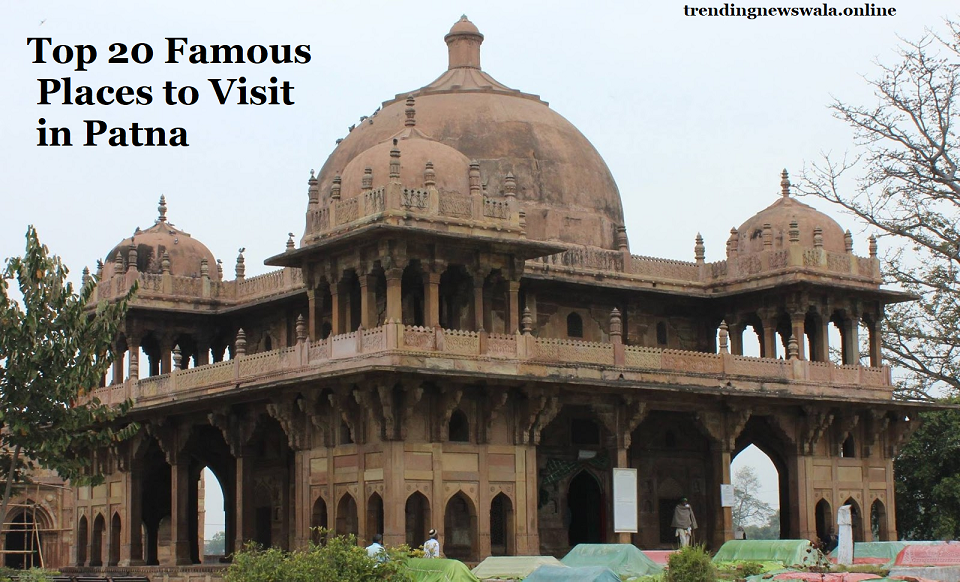
The Ancient metropolis of Patna turned into referred to as Pataliputra all through the Maurya period and changed into the capital of the Magadha Empire. Today Patna is the capital and biggest metropolis of Bihar nation and located at the southern financial institution of the Ganges River and domestic to many traveller sights along side pilgrim centers of Buddhist, Hindu, Sikhs, Islam, and Jain.
There are many places to go to in Patna, Vaishali, Rajgir, Nalanda, Bodh Gaya, and Pawapuri are close by traveler attractions of Patna City, different traveller appeal within the Ancient town of Patna includes.
A standout amongst the maximum vital recorded city regions of India, Patna is a buzzing city with thousands of attractions. Spots to visit in Patna are changed in nature and consider each kind of voyagers.
The tapestry of Patna's heritage with our list of the top 20 famous places to visit. From the sacred tranquility of Takht Sri Harmandir Sahib to the architectural marvel of Golghar, each destination tells a unique story. Explore the Patna Museum's treasures, stroll along the banks of the Ganges, and marvel at the history embedded in the Patna Planetarium. Whether you seek spiritual enlightenment, cultural immersion, or historical intrigue, Patna offers a diverse array of experiences that captivate every traveler's heart."
Top 20 Best Places to go to in Panta
Gol Ghar

Gol Ghar" typically refers to a historical architectural structure in India, specifically associated with the city of Patna in the state of Bihar. Here are more details about Gol Ghar:
Name and Meaning: "Gol Ghar" translates to "Round House" or "Circular Granary" in English. The name is derived from the structure's distinctive round shape.
Location: The most well-known Gol Ghar is located in Patna, Bihar, India. It stands in the center of the city and is a prominent landmark.
Architectural Style: Gol Ghar was built in the 18th century during the British colonial period. The architectural style is often described as a combination of both European and indigenous elements.
Purpose: Gol Ghar was originally constructed as a granary to address the frequent famines that affected the region. Its primary purpose was to store grains and prevent food shortages during times of scarcity.
Construction: The construction of Gol Ghar was commissioned by Captain John Garstin, an engineer in the British East India Company, following a devastating famine in 1770. The structure was completed in 1786.
Design Features: The Gol Ghar is a massive, beehive-shaped structure with a diameter of about 29 meters (94 feet) and a height of approximately 29 meters as well. It has a spiral staircase that winds around the outside to reach the top.
Storage Capacity: The granary has a substantial storage capacity, but its design is such that the stored grains could only be accessed by external means. The shape helps in preventing the stored grains from getting stuck in corners, making it easier to empty the structure.
Natural Disaster Resistance: Gol Ghar is designed to withstand natural disasters such as earthquakes. The walls of the structure are quite thick at the base and gradually become thinner towards the top.
Tourist Attraction: Today, Gol Ghar is a popular tourist attraction in Patna. Visitors can climb to the top of the structure, where they are rewarded with panoramic views of the city.
Cultural Significance: Gol Ghar is not only an architectural marvel but also holds historical and cultural significance. It serves as a reminder of the efforts made during the colonial era to address the challenges of famine and food storage.
Gol Ghar stands as a testament to the historical importance of addressing food security issues in the region. It continues to be an iconic structure and a symbol of resilience and ingenuity in the face of challenges.
Originally built as a granary to be used as a storehouse, Gol Ghar looks like a beehive from a distance. A big shape in itself, it become built by using Captain John Garstin for the British army in 1786.
This flow was propelled through the severe famine of 1770 that did a number of harm. It is 105 feet tall and offers a beautiful view of the complete city together with the River Ganges.
The walls are about 3.6 meters thick which makes it a stable creation. There are two stairways with 141 steps winding around the dome shape of the granary by means of which you can still reach the top to revel in the town view.
This vintage granary is now converted right into a recreational space in conjunction with a lawn in area. The Gol Ghar has an exciting minutiae to it – it has in no way been able to fill to its surest capacity. A design flaw within the production of the doors brought about the situation wherein it was impossible to fill it to its potential.
Mahavir Mandir
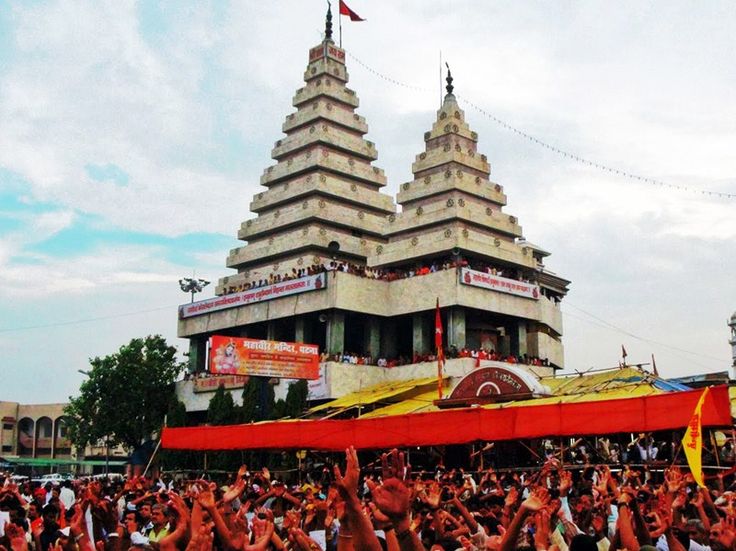
As of my last knowledge update in January 2022, the Mahavir Mandir I am aware of is located in Patna, Bihar, India. Mahavir Mandir is a prominent temple dedicated to Lord Hanuman, who is a revered deity in Hinduism. Please note that there may be other temples with similar names in different locations.
Location: Mahavir Mandir is situated in the heart of Patna, the capital city of Bihar, near the Patna Junction railway station.
Deity: The main deity worshipped at Mahavir Mandir is Lord Hanuman, a central figure in Hindu mythology and one of the most venerated deities for his strength, devotion, and loyalty.
History: The temple has a history dating back to ancient times, but the present structure was rebuilt and renovated in recent decades. It has gained significant popularity and religious importance.
Architecture: The temple follows traditional Hindu temple architecture, with a distinctive design dedicated to Lord Hanuman. The temple complex is spacious and often attracts a large number of devotees.
Devotee Footfall: Mahavir Mandir is known for its high footfall of devotees, especially on Tuesdays and Saturdays, which are considered auspicious days for worshiping Lord Hanuman.
Events and Celebrations: Various religious events, ceremonies, and festivals are celebrated at the Mahavir Mandir. Hanuman Jayanti, the birthday of Lord Hanuman, is a particularly grand celebration at the temple.
Management: The temple is managed by the Mahavir Mandir Trust, which is responsible for the maintenance and administration of the temple and its activities.
It's essential to verify any recent developments or changes by checking local sources or official websites for the most up-to-date information, as my information might not reflect any developments that occurred after January 2024.
Mahavir Mandir, which is also referred to as Hanuman Mandir, is quite well-known amongst many site visitors and within the non secular way of life of Bihar. It became as soon as a nondescript little structure and received reputation with incoming Hindu refugees following the partition of India inside the forties.
The gift structure became erected in 1987 with a distinct modernist take on conventional motifs. Architecture, however, isn't always the measure of its greatness as an awful lot because the devotion it draws. Winding queues of trustworthy on Saturdays and Tuesdays, the worshiping days of Lord Hanuman, are a sight not really worth lacking.
Nalanda University
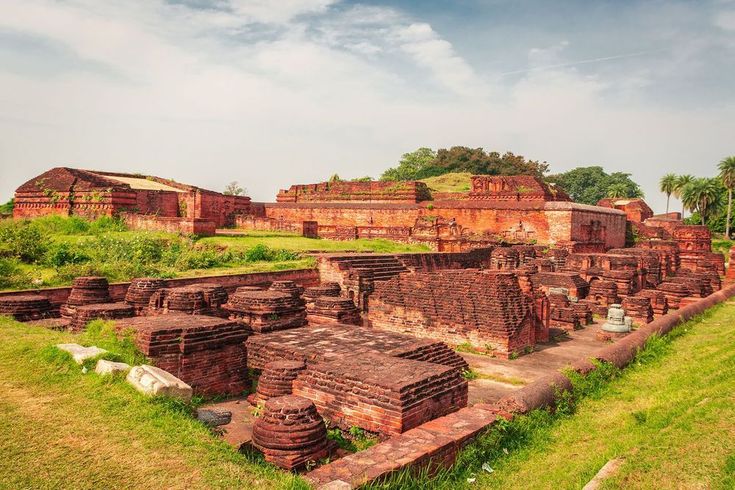
Nalanda University is an ancient center of learning located in the Indian state of Bihar. Here are some key details about Nalanda University:
Historical Significance: Nalanda University is one of the oldest universities in the world, with a history dating back to the 5th century CE. It was a renowned center for learning and attracted scholars from different parts of the world.
Location: Nalanda is situated near Rajgir in the state of Bihar, India. The ruins of the ancient university are spread over an extensive area.
Foundation: The university was founded during the Gupta Dynasty in the 5th century by King Kumaragupta. It reached its zenith under the patronage of subsequent rulers, particularly during the reign of Emperor Harsha.
Academic Excellence: Nalanda University was celebrated for its excellence in education, particularly in subjects like philosophy, astronomy, medicine, and Buddhist studies. It had a vast library, with scholars and students coming from various parts of the world for learning and research.
Architectural Marvel: The university complex was a marvel of ancient Indian architecture. It consisted of several monasteries and temples, including the famous Ratnagiri, Odantapuri, and Vikramshila.
Decline: Nalanda University faced a decline and eventual destruction around the 12th century, likely due to factors such as invasions and the changing political and cultural landscape.
Revival (Contemporary): In recent years, there has been an effort to revive Nalanda University as an international center for learning and research. The Nalanda University Act was passed in 2010, and a new university has been established on the same historical site.
Modern Nalanda University: The revived Nalanda University aims to be a symbol of academic excellence, fostering international collaboration and promoting interdisciplinary studies. The university focuses on subjects like historical studies, environmental studies, international relations, and Buddhist studies.
International Collaboration: The modern Nalanda University has sought collaboration with institutions and scholars from around the world, emphasizing a global approach to education and research.
Current Status: As of my last knowledge update in January 2022, the modern Nalanda University continues its efforts to establish itself as a leading educational institution. Please verify with more recent sources for any updates or changes.
The historical significance and cultural heritage of Nalanda University make it an important site for both scholars and tourists interested in the rich history of India's educational and intellectual traditions.
For an immersion in Bihar’s glorious past, head to the ruins of the ancient college of Nalanda. Monumental red brick partitions and stupas proudly stand on the web page of what became the longest running university in Indian records.
In 450C, it become set up by way of Buddhist clergymen and might accommodate over 10,000 students. Today simplest continue to be is 14 hectares of place with plenty of the distance to thrill the beautiful environment.
80 kilometers from Patna metropolis and without problems available by bus, there are few higher methods to spend an adventurous day trip.
Patna Museum
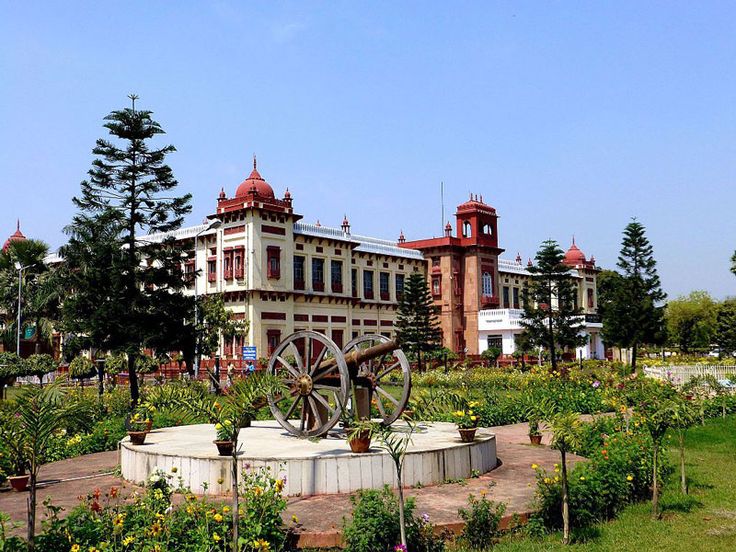
The Patna Museum, also known as the Bihar Museum, is a prominent museum located in Patna, the capital city of Bihar, India. Here are some key details about the Patna Museum:
Location: The Patna Museum is situated on Budh Marg in Patna, near the city center. It is easily accessible and attracts visitors interested in art, history, and archaeology.
Establishment: The museum was established in 1917 during the British colonial period. It was designed by the famous Edwardian architect Sir Swinton Jacob.
Architectural Style: The architecture of the museum reflects a blend of Mughal and Rajput styles, making it an aesthetically pleasing structure.
Collections: The Patna Museum houses an extensive collection of artifacts and artworks that showcase the rich cultural heritage of Bihar and India. The collections include sculptures, paintings, pottery, textiles, coins, and other archaeological finds.
Notable Exhibits: One of the significant exhibits is the Didarganj Yakshi, a beautiful and iconic sculpture dating back to the Maurya period. Other notable artifacts include the Didarganj Chariot, the Chausa hoard of silver coins, and a collection of British-era paintings.
Galleries: The museum is divided into several galleries, each dedicated to specific themes or periods. Some of these galleries focus on the Maurya and Gupta periods, while others showcase artifacts from the British colonial era.
Bronze Images: The museum has an extensive collection of bronze images, including images of Hindu and Buddhist deities. These artifacts provide insights into the artistic and religious practices of ancient India.
Art and Craft Gallery: The museum also has a dedicated Art and Craft Gallery that displays traditional crafts, textiles, and folk art from Bihar.
Gandhi Smriti Sangrahalaya: The museum includes the Gandhi Smriti Sangrahalaya, a section dedicated to Mahatma Gandhi. It houses personal belongings, letters, and photographs related to the life of the Father of the Nation.
Activities and Events: The Patna Museum hosts various educational activities, workshops, and events to engage visitors and promote a deeper understanding of the cultural heritage it preserves.
Upgrades and Renovation: Over the years, there have been efforts to upgrade and renovate the museum to enhance its facilities and better showcase its collections.
It's advisable to check with local sources or the official website for the most up-to-date information, as my knowledge is based on information available up to January 2022. The Patna Museum serves as a valuable resource for historians, archaeologists, and anyone interested in exploring the cultural history of Bihar and India.
Purposely constructed in 1917 by way of the British following an eclectic fashion incorporating elements from Mughal and Rajput structure, Patna Museum homes a collection of over 20,000 historical and archaeological artifacts observed in the location of the metropolis.
The grand constructing is really worth a go to in its personal proper. The actual treasures of the gathering, but, encompass a fossil of a tree stated so far greater than 200 million years, a casket excavated from the Stupa of Vaishali allegedly containing the ashes of Gautama Buddha, and the museum’s maximum prized artifact: the lifestyles-length DidarganjYakshi statue (300 BCE), one of the world’s finest examples of Mauryan artwork.
Kumhrar Park
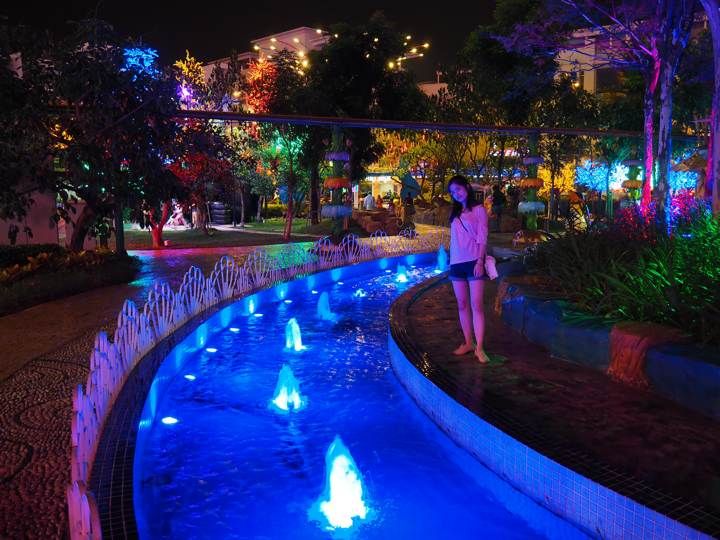
As of my last knowledge update in January 2022, Kumhrar Park, also known as Kumhrar or Kumrahar, is an archaeological site in Patna, Bihar, India. Here are some key details about Kumhrar Park:
Location: Kumhrar Park is located in the eastern part of Patna, near the banks of the Ganges River. It is situated about 5 kilometers away from the city center.
Archaeological Significance: Kumhrar is known for its archaeological remains that date back to the ancient period of Indian history. The site is believed to be the location of the ancient city of Pataliputra, which was the capital of several powerful dynasties, including the Mauryas and the Guptas.
Excavations: The archaeological excavations at Kumhrar have revealed the ruins of the Mauryan period, providing insights into the city planning, architecture, and lifestyle of that era. The remnants include the remains of ancient structures and artifacts.
Pillars of Ashoka: One of the notable findings at Kumhrar is the presence of several Ashokan pillars. These pillars are associated with Emperor Ashoka, who played a significant role in the spread of Buddhism.
Maurya Palace: The excavations have revealed the remains of a Mauryan Palace at Kumhrar. The palace complex includes the ruins of multiple structures, giving archaeologists and historians valuable information about the Mauryan period.
Architectural Features: The remains at Kumhrar showcase features of ancient Indian architecture, including pillars, walls, and the layout of the structures. These elements provide glimpses into the urban planning and construction techniques of that time.
Kumhrar Museum: The site also houses the Kumhrar Museum, which displays artifacts and findings from the excavations. The museum helps visitors understand the historical and cultural significance of the area.
Accessibility: Kumhrar Park is open to the public, allowing visitors to explore the archaeological site and the museum. It is often visited by history enthusiasts, archaeologists, and tourists interested in ancient Indian history.
Conservation Efforts: Efforts have been made to preserve and protect the archaeological remains at Kumhrar. Conservation projects aim to maintain the historical integrity of the site and ensure its accessibility for future generations.
Please note that developments or changes may have occurred since my last update in January 2022. For the most current information, it is advisable to check with local authorities, historical organizations, or visit the site itself. Kumhrar Park stands as a testament to the rich history and cultural heritage of Pataliputra and ancient India.
Kumhrar Park is a records lover’s den and bears immense significance within the evolution of Patna. It is the dwelling instance of the cultural brilliance of ancient Patna or Pataliputra.
Located five kilometers far from the principle town, this region gives an thrilling and enriching perception into the rich records of the exquisite Mauryan civilization.
Kumhrar cradles the archaeological remains of the Mauryan period within the shape of a palace that consists of a hypostyle eighty pillared hall. The excavation findings at Kumhrar throws mild on the historic capital of Ajatshatru, Ashoka, and Chandragupta and also together exhibit the wealthy collection of relics from 4 consecutive intervals from six hundred BC to 600 CE
Sanjay Gandhi Jaivik Udyan

As of my last knowledge update in January 2022, Sanjay Gandhi Jaivik Udyan, also known as the Sanjay Gandhi Biological Park, is a prominent zoo located in Patna, Bihar, India. Here are some key details about Sanjay Gandhi Jaivik Udyan:
Location: The Sanjay Gandhi Jaivik Udyan is situated in Bailey Road, Patna, and is easily accessible from various parts of the city.
Establishment: The zoo was established in 1969 and named after Sanjay Gandhi, the son of former Prime Minister Indira Gandhi. It serves as a major attraction for both locals and tourists.
Area and Layout: The zoo covers a significant area and is well-planned with designated enclosures for various animal species. The layout aims to provide a natural and comfortable environment for the animals.
Biodiversity: Sanjay Gandhi Jaivik Udyan is home to a diverse range of wildlife species, including mammals, birds, reptiles, and aquatic animals. Visitors can observe and learn about animals from different parts of the world.
Animal Exhibits: The zoo features a variety of animal exhibits, including lions, tigers, elephants, giraffes, leopards, deer, and various species of primates. There are also aviaries showcasing different bird species.
Botanical Garden: In addition to the animal exhibits, the zoo has a botanical garden that showcases a variety of plants, trees, and flowers. The botanical section adds an educational dimension to the zoo experience.
Butterfly Park: The Sanjay Gandhi Biological Park includes a Butterfly Park that provides a habitat for various species of butterflies. This section is designed to promote awareness about the importance of butterflies in the ecosystem.
Conservation and Breeding Programs: The zoo actively participates in conservation and breeding programs for endangered species. It aims to contribute to the preservation of biodiversity and raise awareness about wildlife conservation.
Education and Awareness: The zoo plays a role in education and awareness by organizing informative sessions, workshops, and guided tours for visitors. It aims to promote understanding and appreciation of wildlife and conservation issues.
Facilities for Visitors: The zoo provides amenities such as walking paths, seating areas, and refreshment options to enhance the visitor experience. There are often events and activities organized for families and school groups.
Upgrades and Developments: Over the years, efforts have been made to upgrade and develop the infrastructure of the zoo to provide better living conditions for the animals and a more enjoyable experience for visitors.
Please note that my information is based on the state of affairs up to January 2024, and there may have been developments or changes since then. It is recommended to check with local sources or the official website for the most current information before planning a visit to Sanjay Gandhi Jaivik Udyan
First settled as a professional flowerbed in 1969, this maximum outstanding of green territories among Patna occupants consolidate huge open areas containing in extra of 300 kinds of trees, herbs, and bushes, and one of the country’s largest zoos.
Sanjay Gandhi Jaivik Udan is a great location to gather for picnics, or essentially to go out for a stroll via indoor orchid houses and rose patio nurseries.
The Zoo is somewhat extensive and in particular nicely continued, highlighting in extra of 800 creatures from somewhere within the variety of one hundred species, including hippos, tigers, Himalayan bears and uncommon reproducing units of Indian Rhinos.
Buddha Smriti Park
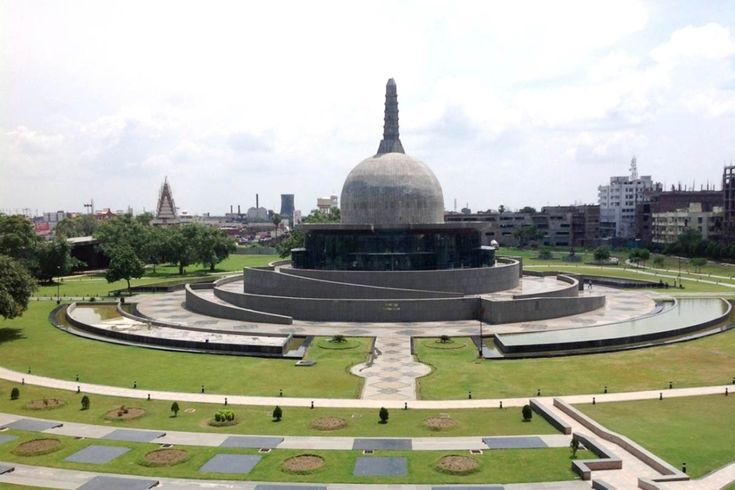
Buddha Smriti Park, also known as Buddha Memorial Park, is a public park and memorial located in Patna, Bihar, India. Here are more details about Buddha Smriti Park:
Location: Buddha Smriti Park is situated in the heart of Patna, near the historic Gandhi Maidan and the banks of the Ganges River. The park is centrally located and easily accessible.
Establishment: The park was inaugurated on May 27, 2010, by the then Chief Minister of Bihar, Nitish Kumar. It was built to commemorate the 2554th birth anniversary of Gautama Buddha.
Purpose and Significance: Buddha Smriti Park is dedicated to the teachings and life of Lord Buddha. The park aims to create awareness about Buddhism and serve as a peaceful space for reflection and meditation.
Emperor Ashoka Pillar: One of the central features of the park is a 200-feet-high central stupa, inspired by the Great Stupa of Sanchi. It is surrounded by a circular path with the Ashoka Pillar at the center. The pillar is reminiscent of the Ashoka Pillars erected by Emperor Ashoka across his empire.
Meditation Hall: The park includes a meditation hall known as the "World Peace Pagoda." The pagoda is an architectural structure that offers a serene environment for meditation and contemplation.
Bodhi Tree: A sacred Bodhi tree is planted in the park, symbolizing the tree under which Lord Buddha attained enlightenment. The presence of the Bodhi tree adds a spiritual and symbolic dimension to the park.
Museum: Buddha Smriti Park houses a museum that showcases artifacts related to the life and teachings of Buddha. The museum provides insights into the history of Buddhism and its impact on the world.
Library: The park has a Buddhist literature library where visitors can access books, scriptures, and literature related to Buddhism. The library contributes to the educational aspect of the park.
Open-Air Theatre: An open-air theatre within the park serves as a venue for cultural events, performances, and educational programs related to Buddhism.
Lotus Pond and Gardens: The park features a lotus pond and well-maintained gardens, creating a tranquil atmosphere for visitors. The landscaping is designed to enhance the overall aesthetics of the park.
Visitors' Center: There is a visitors' center within the park that provides information about the various features and activities in the park. It serves as a starting point for those exploring the park.
Cultural and Educational Events: Buddha Smriti Park hosts various cultural and educational events throughout the year, including seminars, workshops, and celebrations related to Buddhist festivals.
The park not only serves as a tourist attraction but also as a center for promoting peace, harmony, and the teachings of Buddhism. It is a place for both locals and visitors to experience the spiritual and cultural heritage associated with Lord Buddha. Please note that developments may have occurred since my last knowledge update in January 2022, so it's advisable to check with local sources or the official website for the latest information.
The Buddha Smriti Park, otherwise called the Buddha Memorial Park is a tribute to the incomparable Lord Buddha via the legislature of Bihar.
The pastime center is developed precisely in which once the verifiable Bankipur Central Jail stood. Sprawling over a area of nine hectares, this stop is a marvel to look.
The exercise center homes numerous points of interest among which the 200 toes tall Stupa raised cushty focal factor of it's far the factor of convergence of the Buddha Smriti Park.
The large shape is a element of reverence that is worked of sandblasted charcoal and has an high-quality impenetrable chamber inner.
Jain Temple of Pawapuri
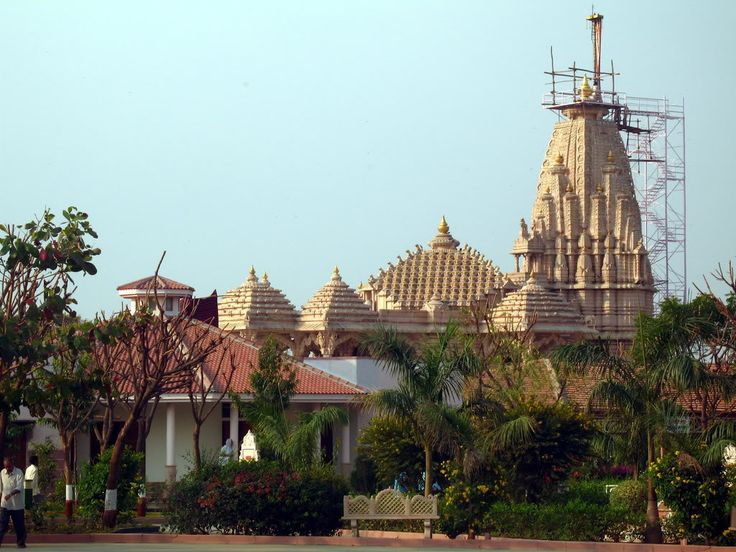
The Jain Temple of Pawapuri, also known as Jal Mandir, is a significant pilgrimage site for Jains located in Pawapuri, Nalanda district, Bihar, India. Here are more details about the Jain Temple of Pawapuri:
Location: Pawapuri is situated near Rajgir in the Nalanda district of Bihar. It is about 38 kilometers away from Patna, the capital city of Bihar. The temple is located on the banks of a lotus-filled tank called Jalmandir.
Significance: The Jain Temple of Pawapuri holds immense significance for Jains as it is believed to be the place where Lord Mahavira, the 24th Tirthankara of Jainism, attained nirvana (liberation) around 2,500 years ago. The site is considered sacred and holds great religious importance.
Jal Mandir (Temple in Water): The main temple is surrounded by the Jal Mandir, a water tank filled with lotus flowers. The temple is built in the middle of this tank, giving it the appearance of floating on the water. Devotees can access the temple through a narrow causeway.
Architecture: The temple reflects traditional Jain architectural style. It is a white marble structure with intricate carvings and detailing. The serene surroundings and the reflection of the temple in the calm waters of Jal Mandir contribute to the peaceful ambiance of the site.
Jal Mandir Rituals: Devotees often engage in rituals such as the Prakshal (ritual bathing) of the deity by offering water from the Jal Mandir. It is believed that performing these rituals brings spiritual merit.
Pilgrimage Destination: The temple is a popular pilgrimage destination for Jains, and many followers visit Pawapuri to pay their respects to Lord Mahavira. Pilgrims consider it auspicious to take a dip in the Jal Mandir as part of their religious observances.
Svetambara and Digambara Sects: The temple is revered by both Svetambara and Digambara sects of Jainism. Followers from both sects come to Pawapuri to offer prayers and participate in religious activities.
Annual Paryushana Festival: The annual Paryushana festival, an important religious event in Jainism, is celebrated with enthusiasm at the Pawapuri Jain Temple. During this festival, Jains engage in prayers, meditation, and reflect on the teachings of Lord Mahavira.
Pawapuri Excavations: Apart from the temple, Pawapuri has been the site of archaeological excavations that have revealed ancient Jain artifacts and remains. These findings provide insights into the historical significance of the region.
Conservation and Preservation: Efforts are made to preserve and maintain the sanctity of the Jain Temple of Pawapuri. Conservation measures are implemented to ensure the longevity of the temple and its cultural heritage.
It's important to verify any recent developments or changes by checking local sources or the official website for the most up-to-date information. The Jain Temple of Pawapuri remains a place of reverence and pilgrimage for Jains, symbolizing the spiritual attainment of Lord Mahavira.
In spite of being one of the most hooked up of the antiquated Indian religions, Jainism remains included in loss of clarity to severa visitors.
Pawapuri, or the precise city, is a noteworthy journey spot for Jains from everywhere throughout the kingdom. Here, they believe all transgressions are cleared. Ruler Mahavira, originator of Jainism, inhaled his remaining at this area round 500BCE.
A remarkable marble sanctuary, the Jalmandir, turned into later labored at the point of interest of an expansive water body.
Chhoti Dargah

As of my last knowledge update in January 2022, I don't have specific information about a place known as "Chhoti Dargah." Dargahs are often associated with Sufi shrines in Islam, and the term "Chhoti Dargah" could refer to a smaller or secondary dargah. It's possible that there are multiple dargahs with similar names in different locations.
If "Chhoti Dargah" refers to a specific dargah or shrine, I recommend checking local sources, travel guides, or online resources for the most accurate and up-to-date information. Here are some general details about dargahs and their significance:
Dargah: A dargah is a shrine or tomb built over the grave of a revered Islamic figure, often a Sufi saint or spiritual leader. It is a place of pilgrimage for Muslims seeking blessings and spiritual solace.
Sufi Tradition: Dargahs are closely associated with the Sufi tradition, which emphasizes spiritual closeness to God through love, devotion, and the teachings of Sufi saints.
Devotional Practices: Devotees visiting a dargah may engage in various devotional practices, such as offering prayers, reciting verses from the Quran, and seeking blessings from the saint buried at the site.
Sufi Festivals: Many dargahs host festivals and celebrations, especially during the Urs, an annual commemoration of the death anniversary of the Sufi saint. These events often include music, dance, and other cultural activities.
Dargah Architecture: Dargahs are known for their distinctive architectural features, including domes, minarets, and courtyards. The structures are often adorned with intricate designs and calligraphy.
Pilgrimage Sites: Well-known dargahs, such as the Ajmer Sharif Dargah in Rajasthan, India, draw millions of pilgrims from different parts of the world. These sites are considered spiritually significant.
If you have a specific location or more details about the "Chhoti Dargah" in mind, please provide additional information, and I'll do my best to assist you. Otherwise, I recommend checking with local sources or conducting online searches for information about a particular dargah with that name.
30km west of Patna downtown region, inside the environs of Maner, sits Chhoti Dargah, one of the satisfactory and slightest acknowledged Mughal catacombs of Eastern India.
It is a great 3-tale domed structure with 4 twelve-sided minarets in its flanks. Its dividers are adorned with many-sided structures and entries from the Koran are engraved at the roof.
The tomb was raised in 1616 out of appreciation for Sufi Muslim holy man or woman Makhdoom Shah Daulat who turned into included at the come across some years in advance. Summers see the expansive waterway earlier than the constructing transform into neighborhood youngsters’ maximum cherished swimming showers.
Gandhi Ghat

As of my last knowledge update in January 2022, there are several locations across India and other countries associated with Mahatma Gandhi, commonly known as Gandhi Ghat or Gandhi Memorial. These sites often serve as memorials, parks, or places of historical significance dedicated to Mahatma Gandhi, the leader of the Indian independence movement.
Since there isn't a specific location mentioned with the name "Gandhi Ghat," I'll provide information on a few notable Gandhi Ghats in India:
Gandhi Ghat in Patna: Gandhi Ghat in Patna is situated along the banks of the Ganges River. It is a memorial dedicated to Mahatma Gandhi, and it marks the spot where his ashes were immersed in the river after his assassination in 1948. The ghat features a statue of Gandhi and is a place for reflection and homage.
Gandhi Ghat in Haridwar: Har Ki Pauri in Haridwar, Uttarakhand, is a prominent ghat along the Ganges and is sometimes referred to as Gandhi Ghat. While not exclusively dedicated to Mahatma Gandhi, Har Ki Pauri is a significant religious and cultural site where people gather for ritual bathing in the holy river.
Gandhi Ghat in Patiala: The Gandhi Ghat in Patiala, Punjab, is located along the Bhakhra Main Line Canal. It is a memorial site where Mahatma Gandhi's ashes were immersed. The ghat has a serene atmosphere and is visited by locals and tourists.
Gandhi Ghat in Kolkata: Princep Ghat in Kolkata is often associated with Mahatma Gandhi. While not exclusively a Gandhi Ghat, it has historical significance as a place where immersion of Mahatma Gandhi's ashes took place. The ghat is located along the Hooghly River.
Gandhi Ghat in Barrackpore: Gandhi Ghat in Barrackpore, West Bengal, is another site associated with Mahatma Gandhi. It is located on the banks of the Hooghly River and is a memorial where Mahatma Gandhi's ashes were immersed.
These locations serve as reminders of Mahatma Gandhi's contributions to India's independence and his philosophy of non-violence. If there is a specific Gandhi Ghat you are referring to, please provide additional details, and I will do my best to offer more information. It's also recommended to check with local sources for the latest updates on these sites.
The means using down to the Ganges, close to the little ship terminal, is an extremely good spot from which to take in the serene rhythms of the waterway and watch a bona fide cut of Indian reality.
Couples hang around right here sporadically, children play and shower and inside the occasion which you look dubiously like a traveller, you’ll be provided a quick vessel ride subsequent to arranging the cost.
On Saturday and Sunday night times at around 18.00, swarms rush right here to look at Hindu ministers hung in saffron gowns play out the Aarti custom, an providing of light and fire to the gods joined via tunes of acclaim.
Patna devi temple is one of the most historic and sacred temples of all temples of Patna, Bihar. It is known as as Mata Patneshwari. This temple is one of the fifty one Siddha ShaktiPithas. It is situated within the capital of Bihar, Patna.
Agam Kuan
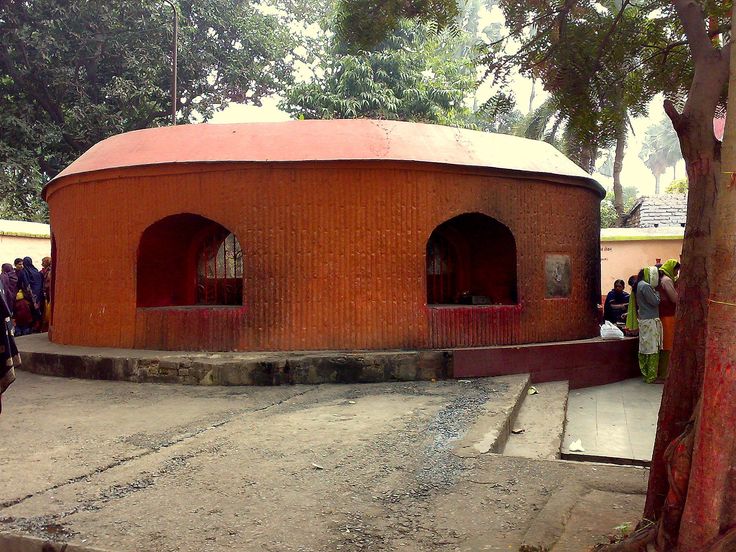
Agam Kuan, also known as the "Unfathomable Well," is an ancient well located in Patna, Bihar, India. Here are more details about Agam Kuan:
Location: Agam Kuan is situated in the southeastern part of Patna, near the Gulzarbagh Railway Station. It is considered one of the archaeological sites of historical significance in the city.
Historical Significance: Agam Kuan has historical and archaeological importance, dating back to the Mauryan period, which makes it more than 2,000 years old. It is believed to have been commissioned by the Mauryan Emperor Ashoka.
Structure: The well is circular in shape and is made of brick. It has a diameter of about 4.3 meters (14 feet) and a depth of approximately 13.1 meters (43 feet). The structure is well-preserved, considering its ancient origins.
Legend and Mythology: Agam Kuan is associated with various legends and myths. One legend suggests that it was used as a royal prison during the Mauryan period, and some even claim that Emperor Ashoka ordered the execution of his 99 brothers and threw their bodies into this well. However, historical evidence supporting these legends is limited.
Steps and Platforms: The well is surrounded by a set of eight small stairs that lead down to the water level. There are also several platforms around the well, and visitors can explore the area.
Water Level: Despite being ancient, Agam Kuan is known to have a consistent water level throughout the year. The water in the well is considered auspicious, and people sometimes take it as holy water.
Archaeological Excavations: Archaeological excavations around Agam Kuan have unearthed artifacts and structures from different periods, providing insights into the historical significance of the site.
Religious Significance: Agam Kuan is regarded as a sacred site by some religious communities, and it is visited by both tourists and locals. Devotees often offer prayers and perform rituals at the well.
Maintenance and Conservation: Efforts have been made to maintain and conserve Agam Kuan as a historical and archaeological site. The surrounding area has been developed for visitors, with pathways and information boards.
Surrounding Temple: In the vicinity of Agam Kuan, there is a temple dedicated to Goddess Shitala, which is also a place of worship.
It's essential to note that while legends and myths surround Agam Kuan, historical evidence to support them is limited. The site, nonetheless, stands as a testament to the ancient history of Patna and the Mauryan period. As always, for the latest information or changes, it is advisable to check with local authorities or historical organizations.
Agam Kuan, otherwise called the ‘Incredible Well’ is an antiquated properly that has high-quality archeological and recorded importance in Patna.
Round suit as a fiddle, the higher 13 meters of the nicely is constant with blocks whilst the relaxation of the nineteen meters incorporates wood rings. This website online is secured by using the Archaeological Survey of India.
The nicely had numerous legends associated with it and turned into worked amid the Mauryan Emperor Ashoka’s rule. It is said that the Agam Kuan changed into a piece of King Ashoka’s council of damnation in which convicts were tormented alive in the fireplace radiated from the well. Indeed, King Ashoka had suffocated his ninety nine siblings in this nicely to get the placement of authority of the Mauryan Empire.
Sri krishna Science Center

As of my last knowledge update in January 2022, the Sri Krishna Science Centre is a science museum located in Patna, Bihar, India. Here are more details about the Sri Krishna Science Centre:
Location: The Sri Krishna Science Centre is situated in the capital city of Bihar, Patna. It is located near the famous Gandhi Maidan and is easily accessible within the city.
Establishment: The science center was established with the aim of promoting scientific education, awareness, and curiosity among visitors, especially students.
Inauguration: The Sri Krishna Science Centre was inaugurated on April 14, 1978, by the then Chief Minister of Bihar, Jagannath Mishra. It has since become a popular destination for school trips, families, and science enthusiasts.
Architectural Features: The architecture of the science center is designed to provide an interactive and engaging environment for visitors. The layout includes exhibition halls, galleries, and interactive displays.
Exhibits and Galleries: The center features a variety of exhibits and galleries covering different branches of science, including physics, chemistry, biology, astronomy, and environmental science. The exhibits are designed to make science concepts accessible and interesting for visitors of all ages.
Interactive Displays: One of the highlights of the Sri Krishna Science Centre is its interactive displays and hands-on exhibits. Visitors are encouraged to actively engage with the displays to enhance their understanding of scientific principles.
Planetarium: The science center includes a planetarium that offers shows and presentations on astronomy and space science. The planetarium provides a simulated experience of the night sky and celestial phenomena.
Educational Programs: Sri Krishna Science Centre conducts educational programs, workshops, and science demonstrations for school students and other groups. These programs aim to supplement formal education and foster a scientific temperament.
Science Park: The center may have a science park or outdoor area with exhibits showcasing practical applications of scientific principles. This provides a more interactive and outdoor learning experience.
Temporary Exhibitions: The science center may organize temporary exhibitions on specific themes or topics to keep the content fresh and engaging for repeat visitors.
Conservation and Upgrades: Efforts are made to conserve and upgrade the facilities at the Sri Krishna Science Centre. This includes maintaining exhibits, upgrading technology, and incorporating new developments in the field of science education.
Visitor Amenities: The science center likely provides amenities such as a cafeteria, rest areas, and educational resources for visitors.
Please note that details mentioned here are based on information available up to January 2022, and there may have been developments or changes since then. For the latest information and updates, it's recommended to check with the Sri Krishna Science Centre directly or refer to official sources.
Named after the primary Chief Minister of Bihar, Srikrishna Science Center is a stunning spot to realize the standards of technological know-how thru all the way down to earth exhibitions.
The instructive center factor holds some thing for all age, but, it is maximum well-known among youngsters. Get excited at the simple minute you input the technological know-how cognizance as you get the threat to listen the echoes of the recommendations of dinosaurs.
The two-storied constructing additionally houses a sundial at the passageway. Each stage is dedicated to an exchange subject this is related to science. The predominant ground has the ‘Fun Science Gallery’ that reveals logical hardware.
It covers an extensive style of topics incorporating human development, particular logical requirements alongside the distinct parts of marine life.
Sun Temple

The term "Sun Temple" is associated with several historical and architectural marvels dedicated to the sun god across different regions. One of the most famous Sun Temples is the Konark Sun Temple in Odisha, India. Here are more details about the Konark Sun Temple:
Location: The Konark Sun Temple is located in Konark, Odisha, on the eastern coast of India. It is situated about 35 kilometers northeast of Puri and approximately 65 kilometers from the state capital, Bhubaneswar.
Architectural Style: The Konark Sun Temple is a masterpiece of ancient Indian architecture and is known for its intricate stone carvings and sculptures. The temple was built in the Kalinga architectural style during the 13th century.
Dedication: The temple is dedicated to Surya, the sun god in Hinduism. It is designed in the shape of a chariot with 24 wheels, each representing an hour of the day, and pulled by seven horses. The entire structure symbolizes the movement of the sun.
Construction Period: The construction of the Konark Sun Temple is believed to have been initiated by King Narasimhadeva I of the Eastern Ganga Dynasty in the 13th century. The temple complex was designed to serve both as a place of worship and a monumental astronomical instrument.
Architectural Elements: The temple complex consists of a main sanctum (vimana), a large assembly hall (Jagamohana), and a dance hall (Natamandira). The intricate carvings depict scenes from daily life, mythology, and various forms of the sun god.
Erotic Sculptures: The temple is also known for its erotic sculptures, which are an integral part of the intricate carvings. These sculptures depict various aspects of human life and have led to the temple being known for its sensuous art.
Nata Mandira: The Nata Mandira, or the dance hall, is one of the distinctive features of the Konark Sun Temple. It is adorned with sculptures of musicians, dancers, and other artistic representations.
Wheel and Spokes: The large stone wheel on the temple is a prominent feature. Each wheel has eight thick spokes and represents a chariot wheel. The wheels also serve as sundials, allowing the calculation of time based on the position of the sun.
UNESCO World Heritage Site: The Konark Sun Temple is a UNESCO World Heritage Site, recognized for its cultural and historical significance. It attracts visitors from around the world who are fascinated by its architectural grandeur and cultural richness.
Conservation Efforts: Over the years, conservation efforts have been undertaken to preserve the Konark Sun Temple. Weathering and the impact of time have taken a toll on the structure, and initiatives are ongoing to protect and maintain this historical treasure.
It's important to note that while the Konark Sun Temple is one of the most famous sun temples, there are other temples dedicated to the sun god in different parts of India, each with its unique architectural and cultural significance. If you are referring to a different Sun Temple, please provide additional details for more accurate information.
The Sun Temple is one of the uncommon hallowed places that stay with its back to the growing solar. Nearby legends find that the sanctuary was first of all assembled confronting the east aspect yet at the requests of the minister, the passage become swung towards the west who had to spare the sanctuary from intruders.
Saturated with folklore, the magical Sun Temple is said to have its underlying foundations settled inside the Treta Yuga.
Notwithstanding, numerous archaeological bits of proof indicates that the sanctuary become worked within the eighth century. Worked in Nagar fashion, the thoughts-blowing layout of the sanctuary grabs the eye of guests.
Committed to the Sun God, there are 3 statues of the Lord that speak to morning, night and night. There are numerous legends associated with this location of the journey.
The Sun Temple is one of the unusual hallowed places that continue to be with its returned to the growing solar. Nearby legends discover that the sanctuary changed into to start with assembled confronting the east side but at the requests of the minister, the passage became swung in the direction of the west who had to spare the sanctuary from intruders.
Kamaldah Jain Temple

As of my last knowledge update in January 2022, I don't have specific information about a Jain temple named "Kamaldah Jain Temple" in Patna. It's possible that the temple may be known by a different name or that it is a local or community-specific temple not widely covered in general sources.
To obtain more details about Kamaldah Jain Temple in Patna, you may consider the following steps:
Local Sources: Reach out to local residents, Jain community members, or local guides in Patna. They may have specific information about the temple, its history, and any cultural or religious significance.
Jain Community Organizations: Contact Jain community organizations or associations in Patna. They may have information about Jain temples in the area and can guide you to the specific temple you are inquiring about.
Local Tourism Office: Visit or contact the local tourism office in Patna. They often have information about notable religious sites in the region and may provide details about Kamaldah Jain Temple.
Online Forums and Communities: Explore online forums or social media groups related to Jainism, religious sites in Patna, or local community discussions. Members of such groups may share insights or direct you to relevant information.
Travel Websites: Check travel websites and guides that focus on Patna or Jain pilgrimage sites. They may provide information about the temple, including its location, history, and any visitor guidelines.
Recent Publications: Look for recent publications, articles, or blogs that discuss religious sites in Patna. Sometimes, new information is shared in recent writings.
If there have been developments or changes since my last update in January 2022, checking recent sources and contacting local authorities would be the most reliable way to obtain up-to-date information about Kamaldah Jain Temple in Patna.
The antiquated Jain sanctuary is organized close Gulzarbagh railroad station and the most established Jain complex in Patna. Kamaldah Jain Temple complicated has been highlighted inside the BBC narrative on India the Story of India through Michael Wood.
Funtasia Water Park
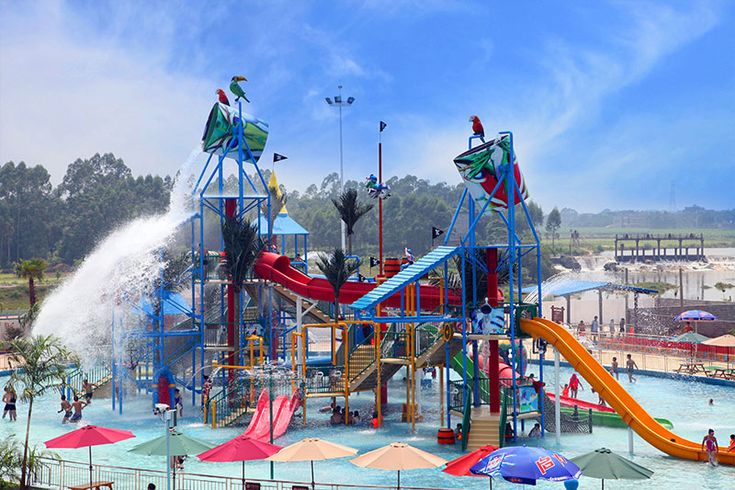
As of my last knowledge update in January 2022, Funtasia Water Park is a popular amusement and water park located in Patna, Bihar, India. Here are more details about Funtasia Water Park:
Location: Funtasia Water Park is situated in Patna, the capital city of Bihar. The park is easily accessible and is a popular recreational destination for locals and tourists.
Attractions : The water park features a variety of water-based attractions and rides for visitors of all ages. These may include water slides, wave pools, lazy rivers, water playgrounds, and other interactive water features.
Wave Pool: Many water parks, including Funtasia, often have a wave pool that simulates the experience of ocean waves. Visitors can enjoy swimming in a pool with periodic waves, creating a beach-like atmosphere.
Water Slides: Water slides are a staple of water parks, offering thrilling rides for adrenaline enthusiasts. Funtasia likely has a range of water slides, each providing a different sliding experience.
Lazy River: Lazy rivers are slow-moving water channels where visitors can relax while floating on inflatable tubes. They are designed for a more leisurely water experience.
Kiddie Pools: Funtasia may have separate pools and water features designed specifically for younger children. These areas often include smaller slides, shallow pools, and interactive water play structures.
Adventure Rides: In addition to water attractions, Funtasia Water Park may include adventure rides, dry rides, and other amusement park features to cater to a diverse audience.
Food and Refreshments: Water parks typically offer food and refreshment options for visitors. Funtasia may have food stalls, cafes, or designated areas where visitors can purchase snacks and meals.
Safety Measures: Like any water park, Funtasia is likely to have safety measures in place, including lifeguards, first aid stations, and guidelines for visitors to ensure a safe and enjoyable experience.
Events and Special Occasions: The water park may host special events, theme nights, or promotions during certain times of the year. Checking the park's schedule or website can provide information about any upcoming events.
Operational Seasons: Water parks often operate during specific seasons, typically during the warmer months. It's advisable to check the park's opening and closing dates to plan a visit accordingly.
Ticketing and Admission: Funtasia Water Park likely has a ticketing system for admission. Details about ticket prices, group discounts, and any special packages can usually be found on the park's official website or at the entrance.
It's essential to note that details provided here are based on general knowledge about water parks, and specific features and offerings at Funtasia Water Park may vary. For the most accurate and up-to-date information, it is recommended to check with the water park directly or visit its official website.
Funtasia Water Park is the first water stop in Bihar country, An diversion and water forestall located in Patna on the New Bypass road. Funtasia Island Water stop attractions contain Waterslides, Wave pool, Swimming pools and area to examine La tomatinaHoli party in India.
Pathar Ki Masjid

As of my last knowledge update in January 2022, "Pathar Ki Masjid" in Patna typically refers to a mosque made of stone, and it is one of the historical landmarks in the city. Here are more details about Pathar Ki Masjid in Patna:
Location: Pathar Ki Masjid is located in the heart of Patna, Bihar, India. It is situated near the banks of the Ganges River and is in close proximity to other historical sites in the city.
Architecture: The mosque is known for its distinctive architectural style. As the name suggests, "Pathar Ki Masjid" translates to "Stone Mosque," indicating that it is constructed primarily from stone. The use of stone in the construction gives the mosque a unique and enduring quality.
Historical Significance: Pathar Ki Masjid holds historical significance and is considered one of the important landmarks in Patna. The mosque is believed to have been built by Parvez Shah, the son of the Mughal Emperor Jahangir, during the early 17th century.
Design and Layout: The mosque features a simple yet elegant design with stone walls and arches. The layout typically includes a prayer hall with a mihrab (prayer niche) indicating the direction of Mecca.
Courtyard: Like many traditional mosques, Pathar Ki Masjid may have a courtyard where worshippers can gather for prayers. The courtyard provides an open space for community activities and religious gatherings.
Calligraphy and Ornamentation: The mosque may be adorned with calligraphy and decorative elements, showcasing the artistic and architectural skills of the craftsmen of that era.
Mihrab and Minarets: The mihrab, an ornamental niche in the wall indicating the direction of prayer, is an important feature in the mosque. While smaller in scale compared to grand Mughal mosques, Pathar Ki Masjid may have minarets or towers that add to its architectural charm.
Conservation Efforts: Over the years, efforts have been made to preserve and maintain the historical integrity of Pathar Ki Masjid. Conservation measures aim to protect the structure from natural wear and tear.
Local Heritage Site: Pathar Ki Masjid is considered part of the local heritage in Patna and attracts visitors interested in historical and architectural landmarks.
It's advisable to check with local sources or historical organizations for the most current information about Pathar Ki Masjid, as developments or changes may have occurred since my last update. If you plan to visit, you can explore the mosque and appreciate its historical and cultural significance.
Pathar Ki Masjid likewise prominently referred to as Saif Khan’s Mosque is a very famous Mosque most of the close by Islamic humans organization and is the most established mosque of the city of Patna.
Ganges River Cruise
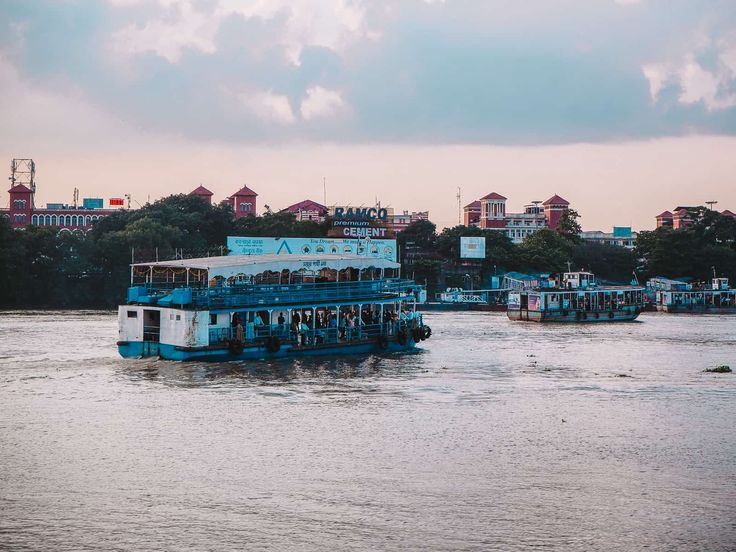
A Ganges River cruise offers a unique and scenic way to explore the cultural, historical, and natural wonders along the Ganges River in India. Here are more details about Ganges River cruises:
Starting Points: Ganges River cruises typically start from key cities along the Ganges, such as Kolkata (Calcutta), Varanasi, and Patna. The choice of the starting point may depend on the specific cruise itinerary.
Cruise Itineraries: Cruise itineraries vary, but they often include stops at important cultural and historical sites along the Ganges. Common stops may include cities, towns, temples, and ghats (steps leading down to the river).
Varanasi, the Spiritual Hub: Varanasi is a significant destination on Ganges River cruises. The city is known for its ghats, where pilgrims gather for spiritual rituals, and the mesmerizing Ganga Aarti, a nightly ritual of offering prayers to the river.
Historical and Cultural Sites: Ganges River cruises may include visits to historical and cultural sites such as ancient temples, forts, and archaeological sites. Some cruises also focus on exploring the traditional arts, crafts, and music of the region.
Ghats and Riverside Villages: Cruises often provide the opportunity to visit and explore the ghats along the Ganges, where daily life, rituals, and ceremonies unfold. Riverside villages showcase the local way of life, and passengers can experience the rich culture of the region.
Wildlife and Natural Beauty: The Ganges River and its surroundings are home to diverse wildlife and natural landscapes. Some cruises offer opportunities for bird-watching and exploring the riverbanks, providing a glimpse of the rich biodiversity of the region.
Onboard Amenities: Ganges River cruise ships vary in size and amenities. Larger vessels may offer comfortable cabins, dining options, lounges, and even entertainment. Smaller, more intimate boats may provide a more immersive experience.
Cultural Performances: Many Ganges River cruises incorporate cultural performances, onboard lectures, and activities that highlight the traditions, history, and arts of the Ganges River region.
Sunrise and Sunset Views: Ganges River cruises often emphasize the beauty of sunrise and sunset on the river. These moments can be particularly enchanting and provide unique photo opportunities.
Religious Festivals and Events: Depending on the time of year, Ganges River cruises may coincide with religious festivals and events celebrated along the river. Participating in or witnessing these events can add a special dimension to the cruise experience.
Customized Cruises: Some tour operators offer customized Ganges River cruises, allowing travelers to tailor their itineraries based on interests and preferences.
Before embarking on a Ganges River cruise, it's advisable to check the latest information on cruise operators, itineraries, and any travel advisories. Different cruises cater to various interests, from cultural exploration to relaxation, providing a memorable journey along one of the world's most revered rivers.
Patna is a town which houses severa settings and attractions of religious and noteworthy essentialness. To investigate this metropolis in a daring manner, an excellent direction is to take the Ganges River Cruise.
It is a voyage of a lifetime, which offers you a risk to get on a riverboat and takes you to higher locations over the metropolis, all of so one can have an impact on you to find any other side of Patna.
It is a to a notable diploma tranquil inclination to cruise on the journey inside the center of an never-ending mass of water with the blue sky overlaying you from all facets. The adventure can also extend for upwards of seven days and is sorted out by way of severa directors in the town.
Takht Sri Harmandir Sahib Ji
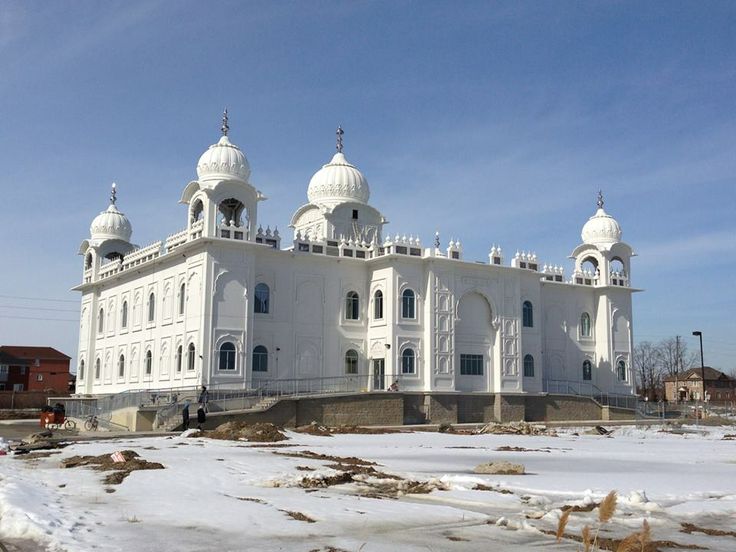
It seems there might be a confusion in your question. Takht Sri Harmandir Sahib Ji is not a specific entity or location. However, there are two prominent places in Sikhism that are often referred to as "Takht Sri Harmandir Sahib."
Takht Sri Harmandir Sahib, Patna Sahib: This refers to a historical Gurdwara in Patna, Bihar, India. It is built in memory of Guru Gobind Singh Ji, the tenth Sikh Guru, who was born in Patna. The gurdwara is also known as Harmandir Sahib Patna Sahib or Patna Sahib, and it holds great significance for Sikhs.
Takht Sri Harmandir Sahib, Damdama Sahib: This is another important Sikh shrine located in the town of Talwandi Sabo in Bathinda, Punjab, India. Guru Gobind Singh Ji stayed here for about a year and compiled the final edition of the Guru Granth Sahib, the holy scripture of Sikhism. It is also known as Takht Sri Damdama Sahib.
In both cases, "Takht" refers to a throne or seat of authority, and "Harmandir Sahib" refers to a sacred temple or shrine. Sikhs hold these places in high regard and consider them as important centers of religious and spiritual significance.
If you are referring to a different location or entity with the name "Takht Sri Harmandir Sahib Ji," please provide more details, and I'll do my best to assist you.
Takht Sri Harmandir Sahib Ji in any other case referred to as Patna Saheb is a conspicuous holiday vacation spot in Patna. A sacrosanct area for Sikhs anywhere all through the globe, Patna Saheb changed into worked by means of Maharaja Ranjit Singh from 1837 to 1839.
This place of worship is dedicated to Guru Gobind Singh ji, the tenth Guru of the Sikhs who had been conceived in Patna in 1666. A standout among the maximum tremendous figures in Indian records, Guru Gobind Singh has a background that may make each person sense unobtrusive.
The gurdwara faced a tremendous seismic tremor in 1934 so new tendencies began in 1954. This gurdwara is domestic to numerous sacred Sikh sacred writings. The hallowed area is surprisingly tremendous to take a gander at and you may sense the intensity of individuals’ confidence the minute you enter it.
Patna Planetarium (Taramandal)

The Patna Planetarium, officially known as the "Indira Gandhi Planetarium," is a popular attraction located in the capital city of Bihar, India. Here are some details about the Patna Planetarium:
Location: The Patna Planetarium is situated in the Indira Gandhi Science Complex, which is located in the center of the city, near the banks of the Ganges River.
Inauguration: The planetarium was inaugurated on March 21, 1993, by the then Chief Minister of Bihar, Lalu Prasad Yadav. It was named after the former Prime Minister of India, Indira Gandhi.
Architecture: The planetarium is designed in a unique and modern architectural style. It is shaped like a huge saucer and has a sloping roof. The architecture itself is an attraction for visitors.
Facilities and Exhibits:
- The main attraction of the Patna Planetarium is the dome-shaped theater, equipped with advanced projection systems for showcasing astronomical shows. The planetarium regularly hosts shows that educate visitors about the cosmos, stars, planets, and other celestial phenomena.
- The facility also includes an astronomical gallery with exhibits on various aspects of astronomy, space exploration, and related scientific subjects.
Shows and Programs:
- The planetarium conducts regular sky shows that provide a virtual tour of the night sky, explaining the positions of stars, planets, and other celestial objects. These shows are both educational and entertaining, making them suitable for all age groups.
- Special programs and workshops on astronomy and space science are organized for students and enthusiasts.
Educational Outreach: The Patna Planetarium plays a crucial role in promoting scientific awareness and education in the region. It serves as a center for educational outreach, attracting students, teachers, and curious minds interested in astronomy.
Visitor Experience: Visitors to the planetarium often find the experience engaging and informative. The combination of visual effects, audio commentary, and interactive sessions enhances the understanding of celestial concepts.
The Patna Planetarium serves as a hub for science enthusiasts and those interested in exploring the wonders of the universe. It has become an integral part of the city's educational and recreational landscape.
Patna Planetarium also called Indira Gandhi Planetarium due to the fact that it is situated in Indira Gandhi technology complex, Patna. It is commonly referred to as and famous in call of Patna Taramandal. Patna planetarium become a challenge started out by using Bihari council on technology and generation at a total cost of 11 crores this is a gift via the Bihar leader minister Shri Satyendra Narayan Sinha who conceptualized it in 1989 with its production starting in the identical right here it changed into opened for the general public visit on 1st of April 1993.





